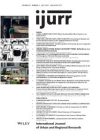In recent years, geographers and urban sociologists have sought to map and understand the emergence and development of lesbian and gay spaces within the city — popularly dubbed ‘the scene’. It is often asserted that the city is a space of sexual liberation and that specifically the ‘scene’ can play an important part in lesbian and gay men’s identity formation and development. However, despite the range and richness of the academic literature on the production and emergence of lesbian and gay urban spaces, relatively little attention has been paid to the actual role of the scene in the ‘coming out’ process and the way young lesbians and gay men negotiate transitions to adulthood. This article addresses this neglect by drawing on empirical work with lesbians and gay men in the UK to explore what the scene has meant to them. In the first half of the article we focus on the positive roles that the scene can play in helping young people to find themselves as they make the transition from childhood to adulthood. In the second half of the article we consider the risks that they can encounter in the process. We conclude by reflecting on the scene as a paradoxical space, and on the implications of this research for the youth transitions and urban studies literatures, and for social policy.
Details
Written by:
Gill Valentine, Tracey Skelton
Digital Object Identifier (DOI)
10.1111/j.0309-1317.2003.00487.x
About DOI
Read full article as PDF
Read full article as HTML
See the references for this article
